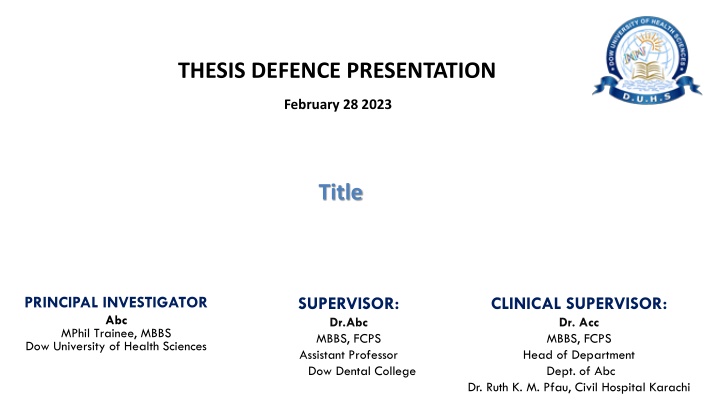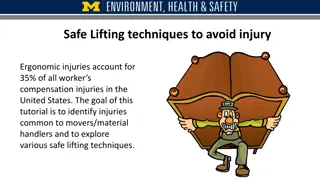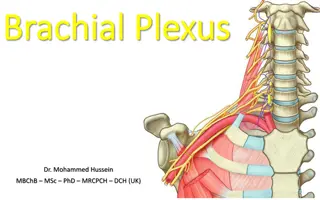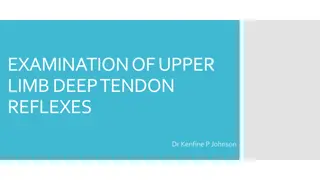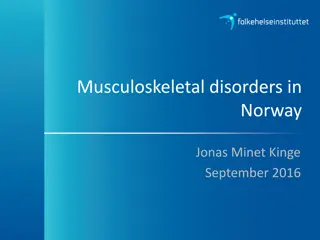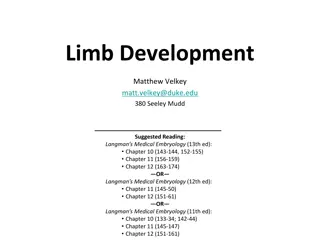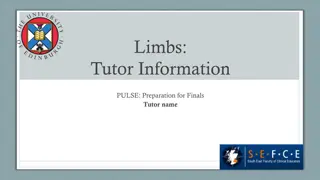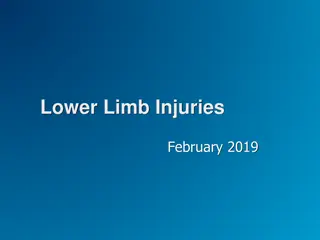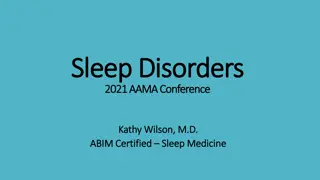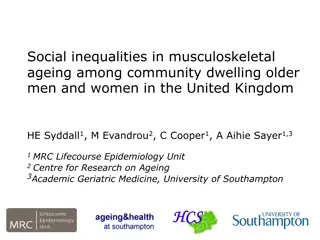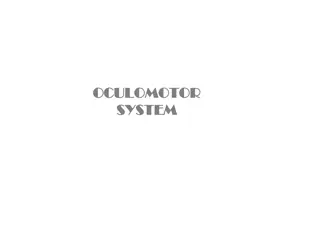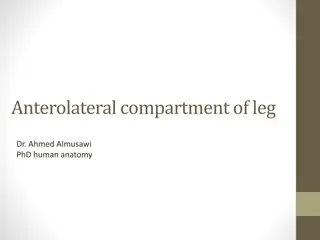Study on Work-Related Musculoskeletal Disorders and Median Nerve Entrapment in Upper Limb
Investigating the prevalence, factors, and treatment options for work-related musculoskeletal disorders, focusing on median nerve entrapment in the upper limb. The study aims to provide insights into this condition through a thorough literature review and research objectives.
Download Presentation

Please find below an Image/Link to download the presentation.
The content on the website is provided AS IS for your information and personal use only. It may not be sold, licensed, or shared on other websites without obtaining consent from the author.If you encounter any issues during the download, it is possible that the publisher has removed the file from their server.
You are allowed to download the files provided on this website for personal or commercial use, subject to the condition that they are used lawfully. All files are the property of their respective owners.
The content on the website is provided AS IS for your information and personal use only. It may not be sold, licensed, or shared on other websites without obtaining consent from the author.
E N D
Presentation Transcript
SYNOPSIS PRESENTATION THESIS DEFENCE PRESENTATION February 28 2023 Title PRINCIPAL INVESTIGATOR Abc MPhil Trainee, MBBS Dow University of Health Sciences SUPERVISOR: Dr.Abc MBBS, FCPS Assistant Professor Dow Dental College CLINICAL SUPERVISOR: Dr. Acc MBBS, FCPS Head of Department Dept. of Abc Dr. Ruth K. M. Pfau, Civil Hospital Karachi
Work-related musculoskeletal disorder. Disease (1- 3) Median nerve Entrapment of upper limb. Mono-neuropathy of upper limb.
Factors causing Disease Abc DFg
INTRODUCTION F>>M Middle age female 1.5/1000 male
INTRODUCTION agents Treatment options therapy vdc (5-8) Avc
PREVALENCE (9-10) 5.8% 3.1% NETHERLAND USA 7 % 16% UNITED KINGDOM
PREVALENCE (11) 7% - 19% PAKISTAN
LITERATURE REVIEW(13-17) Talebi GA et.al. , 2015 Ismail. F and colleagues. 2015 Pratelli. E et.al., 2017 Abc Title Abc Title Abc Title Method Method Method Study Design Study Design Study Design 30 Patients 30 Patients 30 Patients Group vcccc Group vcccc Group vcccc Outcome Measure Outcome Measure Outcome Measure VSAS, DSD VSAS, DSD VSAS, DSD Conclusion Conclusion Conclusion asds asds asds
LITERATURE REVIEW Talebi GA et.al. , 2015 Ismail. F and colleagues. 2015 Pratelli. E et.al., 2017 Abc Title Abc Title Abc Title Method Method Method Study Design Study Design Study Design 30 Patients 30 Patients 30 Patients Group vcccc Group vcccc Group vcccc Outcome Measure Outcome Measure Outcome Measure VSAS, DSD VSAS, DSD VSAS, DSD Conclusion Conclusion Conclusion asds asds asds
RATIONALE(18) Avc
SIGNIFICANCE Acv
MATERIALS AND METHODS A single- blinded, randomized-controlled trial Dr. Ruth K. M. Pfau, CHK (medicine ward) STUDY SETTING STUDY DESIGN STUDY DURATION SAMPLING METHODS Non-probability, purposive sampling technique. 6 Months after synopsis approval SAMPLE SIZE 2 Groups, 30 Patients in each Group. Total Sample Size = 60
MATERIALS AND METHODS INCLUSION CRITERIA EXCLUSION CRITERIA ad ds Age: 18-50 years Both gender patients asd ass sd sd dsd
STUDY GROUPS GROUP A GROUP B ads dds asd asd sad
Group A: Avsc TECHNIQUE Figure:2 aa Figure:3 ff Figure: 4 sad Figure: 5asd
Group B: Avsc TECHNIQUE Figure:2 aa Figure:3 ff Figure: 4 sad Figure: 5asd
OUTCOME MEASURE: (20-22) Visual Analogus Scale (VAS): It is a scale that is typically used to evaluate asds asdsd Visual Analogus Scale (VAS): It is a scale that is typically used to evaluate asds asdsd Visual Analogus Scale (VAS): It is a scale that is typically used to evaluate asds asdsd
OUTCOME MEASURE: (20-22) Visual Analogus Scale (VAS): It is a scale that is typically used to evaluate asds asdsd Visual Analogus Scale (VAS): It is a scale that is typically used to evaluate asds asdsd Visual Analogus Scale (VAS): It is a scale that is typically used to evaluate asds asdsd
DATA COLLECTION PROCEDURE 2) Based on inclusion and exclusion criteria 1) Screened by a consultant Physiatrist 3) Patient recruited 5) Randomly allocated into Group A and Group B. 4) Informed consent 6) Assessment through VAS at baseline & after six weeks 7) Data recorded and analyzed on SPSS 27
STATISTICAL ANALYSIS IBM-SPSS version 27.0 was used to record and analyse the data. Counts and percentages were recorded for baseline characteristics and results on the dad. Within group comparison was made using paired sample test, between group comparisons was done using independent sample t-test. The statistical normality of the data was evaluated by using the Shapiro-Wilk test. Pearson Chi Square test was used to assessed the association on qualitative outcomes of scales. Statistics were considered significant for P-values less 0.05.
RESULTS There were 33 patients with mean age of 12.1 , (30 in each group) 22 were male patients 00 were female patients
DISCUSSION Adsad
DISCUSSION asds
CONCLUSION Afsc
CLINICAL TRIAL REGISTRATION This study has been registered in Clinical trial.gov ClinicalTrials.gov Identifier: NCT05465512
STUD VARIABLES APPENDICES
REFERENCES 1. acc 2. acc
